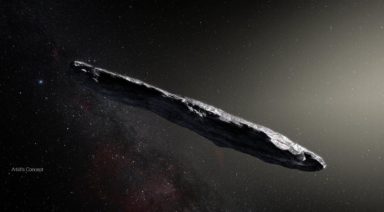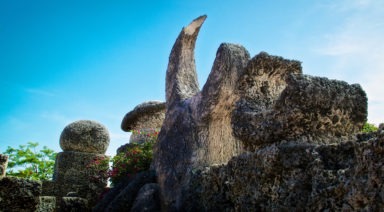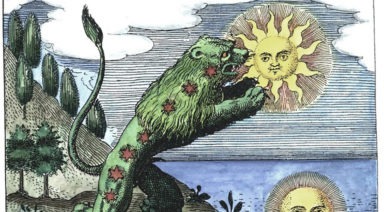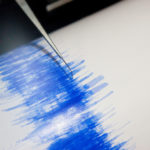China’s Yutu-2 Rover Finds Mysterious Gel-Like Substance on Moon
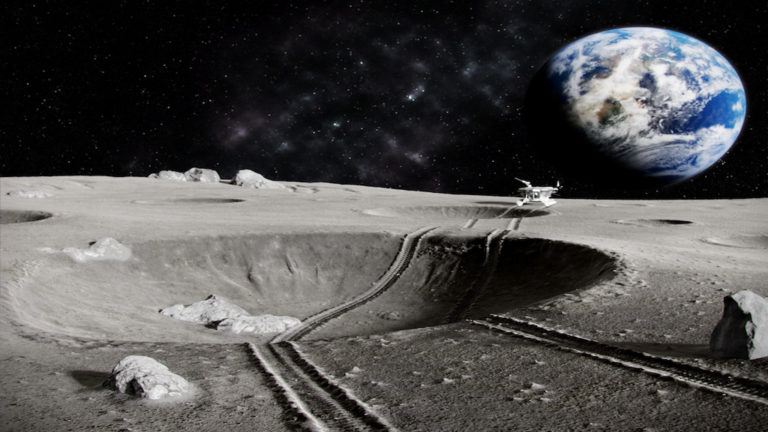
China’s Chang’e 4’s Yutu-2 probe is on the dark side of the moon, making conspiracy theorists slide to the edge of their seats. As part of the China Lunar Exploration Project and China National Space Administration, the moon landing took place earlier this year, setting its unmanned rover loose on the most mysterious lunar landscape. And it seems they have found something unique — a gel-like substance that is, thus far, unexplainable by scientists back on Earth.
China on the Dark Side of the Moon
For millennia people have stared up at the moon and speculated what might be going on in the regions that seem always to be on the opposite side of what appears to be illuminated from Earth. This dark side stares out onto the cold, endless, forbidding landscape of deep space.
Cruising Around the Lunar Surface
The Planetary Society reported, “Though no real science results have emerged yet, scientists involved stated in Nature Geoscience that the landing site shows ‘potential evidence of excavated deep mafic material, which could reveal the mineralogy of the lunar mantle.’” Mafic material is a fancy word for igneous rock rich in magnesium and iron.
Outfitted with a panoramic camera, Yutu-2, the Chinese moon rover is relaying compressed images to Earth that, among other things, have shown features near the ‘Statio Tianhe’ landing site. Since its touchdown earlier this year, Yutu-2 covered a total of 271 meters (890 feet) as it continued Westward of the landing site in Von Kármán Crater.
With China on the moon, a lot of progress is being made in the minds of eager scientists who are busy analyzing the data collected thus far. Analysts reported that the Lunar Penetrating Radar (LPR) experiment aboard the rover has returned “very interesting radar data for lunar subsurface analysis” along the roving route.
But perhaps the most unusual find on the Chinese space mission is one that continues to baffle scientists. The online publication Space reported that Yutu-2 stumbled on an unusually colored, ‘gel-like’ substance during lunar day eight.
According to one report “the rover had been due to power down for one of its regular ‘naps’ just prior to the discovery, but when the anomaly was spotted, engineers decided to postpone the process so that it could be investigated. The discovery prompted scientists on the mission to postpone other driving plans for the rover, and instead focus its instruments on trying to figure out what the strange material is.”
One Chinese space agency explained that on July 28, 2019, during a round of panoramic photography, “someone monitoring the rover spotted a ‘gel with a mysterious luster’ sitting in the centre of the crater. It couldn’t be identified from a distance, but whatever it was, it clearly stood out from its surroundings. ‘The fascinating colors seem to imply its extraordinary life,’ the news site went on to explain.”
An article appearing in Smithsonian.com suggests another yet-unproven idea: “In the absence of details…the announcement has led to speculation. The most likely explanation…is that the lustrous spot isn’t really a gel, but is some form of shiny melted glass created when a meteorite struck the moon.”
At this point, laypersons and scientists alike are waiting until someone gets to the bottom of this gelatinous finding to put speculation to rest. Meanwhile, Chinese moon rover pictures continue to amaze and intrigue heaven-gazers around the globe. Only time will tell (unless of course we get only the “official” story) whether the dark side of the moon has been harboring secrets all along.
Project Serpo and the Zeta Reticuli Exchange Program

In November 1977, Steven Spielberg released his movie, “Close Encounters of the Third Kind.” It was a financial and artistic success. It received a number of accolades, including nominations for four Golden Globes and eight Academy Awards. In 2007, the U.S. Library Of Congress deemed the film “culturally, historically and aesthetically significant” and chose it for preservation in the library “for all time.” Read the purported story of Project Serpo, then consider the evidence.
UFO Encounter Classification
For those new to the topic, the title of Spielberg’s movie came from the UFO classification developed by astronomer and UFO researcher, J. Allen Hynek’s Classification of UFO encounters: + Encounters of the first kind: Someone sees a UFO at a distance closer than 500 feet and is able to give a pretty good description of the object + Encounters of the second kind: The viewing of an UFO creates a physical sensation. For example, the encounter may involve a feeling of heat, or a feeling of paralysis in the body + Encounters of the third kind: Encounters in which a type of “animated creature” accompanies the UFO encounter.
Hynek was an Advisor to the U.S. Air Force on several of its UFO study projects. While he was bound by security clearances, he was undoubtedly privy to information that he was unable to share publicly. He also had a cameo appearance in the Spielberg movie.
In the movie, there are human encounters with extraterrestrials (ETs) and, in the end, one person voluntarily decides to join the ETs and travel with them back to their planet. Could there be any truth to this story? Is it possible that Earth has contacted ETs or that Americans have visited other planets? Read about the Serpo Exchange Program and President Ronald Reagan’s knowledge of Project Serpo.
The Exchange Program Between Earth and Project Serpo In the Zeta Reticuli System
The Planet Serpo exchange project traces its origins to the Famous Roswell Incident where a UFO reportedly crashed in the plains near Socorro, New Mexico, on May 31, 1947. The remains of the craft and one living ET, along with the bodies of his four dead companions, were taken to Roswell for analysis. Meanwhile, the government reported to the American public by telling them they had only seen weather balloons.
As it turned out, there were Two Crashes. The remains of the second UFO were not found until about two years later. It appeared the two spacecraft had crashed into each other. By then, six bodies of dead aliens had decomposed, so there wasn’t much of them left. Even so, the remains were taken to Wright-Patterson Air Force Base for evaluation and study.



